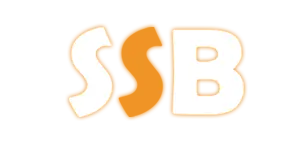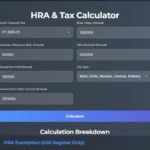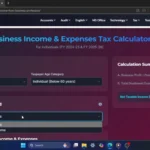D1 – Work-Related Car Expenses
Work-related car expenses are expenses you incurred as an employee for a car you owned or leased or hired under a hire-purchase agreement.
Two Methods:
- Cents per kilometre method:
- $0.78 Per Km.
- Can claim a maximum of up to 5000km.
- Actual Logbook method: Which includes:
- Electronic or Pre-printed logbook.
- Evidence of your actual fuel and oil costs.
- Odometer readings.
- Other car expenses like car repairs and car insurance, etc.
- Can claim depreciation for the motor vehicle.
D2 – Work-related travel expenses
Travel expenses you incur in performing your work as an employee. These can include:
- Public transport, air travel, and taxi fares.
- Bridge and road tolls, parking fees, and short-term car hire.
- Meal, accommodation, and incidental expenses you incur while away overnight for work.
- Expenses for motorcycles and vehicles with a carrying capacity of one tonne or more, or nine or more passengers, such as utility trucks and panel vans.
- Actual expenses, such as petrol, repair, and maintenance costs, that you incur to travel in a car that is owned or leased by someone else.
D3 – Work-related clothing, laundry, and dry-cleaning expenses
You can claim expenses for:
- Protective clothing and footwear.
- Uniforms (Compulsory Uniform & Non-Compulsory Uniform).
- Occupation-specific clothing.
- Laundering and dry-cleaning of the above three categories.
- Cost of renting, repairing, and cleaning work-related clothing.
(Note: If washing, drying, or ironing by yourself, then on a reasonable basis you can claim $1 per load for work-related clothing, or $0.50 per load for other laundry items).
D4 – Work-related self‑education expenses
You can claim a deduction if:
- The course maintained or improved a skill or specific knowledge required for your current work activities, or
- The course was leading to, or likely to lead to, increased income from your current work activities, or
- The course has a direct connection with your current work activities.
D5 – Other work-related expenses
Other work-related expenses are expenses you incurred as an employee and have not claimed anywhere else on your tax return. You can claim the higher of the two methods below:
-
Actual Cost Method (Based on Actual Expenses Incurred). This can include:
- Depreciation of Office Equipment (Laptop, Computer, Keyboard).
- Depreciation of Office Furniture (Desk, Chair, TV, Table).
- Asset Cost Less than $300.
- Union fees and Subscriptions fees to trade, business, or professional associations.
- Work From Home Expenses (Telephone, Internet, Printing, Stationery).
- Electricity and Gas.
- Overtime meal expenses.
- Professional seminars, courses, conferences, and workshops.
- Reference books, technical journals, and Trade magazines.
- Safety items such as hard hats, safety glasses, sunscreens, and other protective items due to COVID-19.
- Note:
- If a Work Related Asset costs less than or equal to $300, then you can claim an immediate deduction for the full cost of depreciating assets.
- If a Work Related Asset costs more than $300, then add it to the Asset Register and apply the Depreciation Percentage as per ATO Depreciation Rate 2023, and then claim depreciation.
-
Fixed Rate Method
- $0.67 per hour × Actual Working Hours.
- (IF Actual Working Hours Details Not Given then consider Maximum: $0.67 × 48 weeks × 5 Days × 8 Hours).
- In addition to the Fixed Rate, you are eligible to claim:
- Depreciation of Office Equipment (Laptop, Computer, Keyboard).
- Depreciation on Office Furniture (Desk, Chair, TV, Table).
- Asset Cost Less than $300.
- Union fees and Subscriptions fees to trade, business or professional associations.
- Overtime meal expenses.
- Professional seminars, courses, conferences, and workshops.
- Reference books, technical journals, and Trade magazines.
- Safety items such as hard hats, safety glasses, sunscreens, and other protective items due to COVID-19.
- But you are NOT eligible to claim (under the Fixed Rate method for the hourly rate portion):
- Electricity and Gas.
- Work From Home Expenses (Telephone, Internet, Printing, Stationery & Computer consumables).
D6 – Low-Value Pool Deduction
Low-Value Pool Deduction means:
Claiming a deduction for the decline in value of low-cost and low-value assets that you used in the course of producing income.
- Low-Cost Assets: Depreciating Assets that cost less than $1000 (after deducting any GST credits).
- Low-Value Assets: Depreciating assets that are not low-cost assets but whose written-down value as of 01/July/2021 (as per diminishing balance method) is less than $1000.
So, Low-Cost Assets and Low-Value Assets can be pooled for the Low-Value Pool Deduction.
Example 1: Emil bought a printer for $600 in 2021–22. Emil uses this printer for Personal purposes 60% and for Office purposes 40%.
Example 2: Emil previously claimed deductions under the diminishing value method for a laptop that he purchased for $1,500. The laptop’s opening adjustable value on 1 July 2021 was $900.
Solution for Example 1 & 2
| Calculation | Low-Cost Assets | Low-Value Assets |
| Cost & Value | $600 | $900 |
| Office Purpose | $240 ($600 × 40 %) | $900 |
| Annual Depreciation Rate | 18.75% | 37.5% |
| Low Value Pool Deduction Allowed | $45 ($240 × 18.75%) | $337.5 ($900 × 37.5%) |
D6 – Low-Value Pool Deduction = $383 ($45 + $337.5)
Notes: If you claim a deduction for an asset under D6, then don’t claim a deduction for that asset under D1 to D5.
D7 – Interest Deductions
Expenses include:
- Bank or other financial institution account-keeping fees for accounts held for investment purposes.
- Fees for investment advice.
- The interest you paid on money you borrowed to purchase income-producing investments.
D8 – Dividend Deduction
Expenses include:
- Fees for investment advice (Portfolio Agent Fees etc.).
- Interest paid on money borrowed to purchase shares or similar investments (Can get from ABN lookup).
- Costs relating to managing your investments, such as travel and buying specialist investment journals or subscriptions.
D9 – Gifts or donations
- You can claim a Gift or donation of $2 or more to an approved organization.
- Generally, you cannot claim a deduction for a gift or donation if you received something in return.
- To check an Approved organization, use this website: https://abn.business.gov.au/
D10 – Cost of managing Tax Affairs
You can claim:
- Interest charged by the ATO.
- Costs for preparing and lodging your Tax return and Activity statements.
- Fees paid to a recognized tax adviser for preparing and lodging your tax return (Tax Agent Fees).
- Litigation costs (including court and Administrative Appeal Tribunal fees, and other legal costs you incurred in managing your tax affairs).
- Travel to obtain tax advice from a recognized tax adviser.
- Cost of buying tax reference material.
- Costs for dealing with the ATO about your tax affairs.
Notes: Tax Agent Fees are deductible on a payment basis (Cash Method only). Previous FY Tax Agent Fees paid in the Current Year are deductible in the Current Year.
D11 – Deductible amount of undeducted purchase price (UPP) of a foreign pension or annuity
- If you showed income from a foreign pension or annuity under Label 20, you are eligible to deduct the UPP of that foreign pension or annuity under Label D11.
- Undeducted purchase price (UPP) is the amount you contributed towards the purchase price of your foreign pension or annuity.
D12 – Personal Superannuation Contributions
Claiming Deduction under D12 Personal Superannuation Contribution:
There are limits on how much deduction you can claim.
Question
| Particular | Amount |
| FY | 2020-21 |
| Your Salary Income | $80,000 pa |
| Compulsory Employer Contribution 10% | $8,000 pa |
| Salary Sacrificed to Superannuation Before Tax ($50 x 52 Weeks) | $2,600 pa |
| Concessional contributions to Super (Total: $8,000 + $2,600) | $10,600 pa |
| Concessional Cap Limit for FY 20-21 | $27,500 pa |
| Difference (Remaining Cap: $27,500 – $10,600) | $16,900 pa |
| Additional Contribution made into superannuation fund by an individual from After-Tax Income (PSC) | $11,500 pa |
Answer
| Particular | Amount |
| Maximum additional concessional contribution possible within cap (a) | $16,900 pa |
| Actual Personal Superannuation Contribution made from after-tax income (b) | $11,500 pa |
| Whichever is Lower (a vs b) can be claimed under D12 | $11,500 pa |
D13 – Deduction for project pool
You can claim a deduction for:
- Capital expenditure directly connected to a project.
- This deduction of capital expenditure is allowed over the life of the project.
- This applies to capital expenditures that do not form part of the cost of a depreciating asset.
To deduct capital expenditure, it must be one of the seven specific types of capital expenditure incurred:
- To create or upgrade community infrastructure for a community associated with the project.
- To obtain information associated with the project.
- For site preparation costs for depreciating assets (except, for horticultural plants, in draining swamp or low-lying land or in clearing land).
- For feasibility studies for the project.
- For environmental assessments for the project.
- For ornamental trees and shrubs.
- Seeking to obtain a right to intellectual property.
D14 – Forestry managed investment scheme deduction
- Forestry means planting, managing, and caring for forests.
- A Forestry Managed Investment Scheme (FMIS) encourages the expansion of forestry in Australia through the establishment and tending of new plantations for felling.
There are two different types of investors in FMIS:
- Initial participants – Can claim deduction under D14.
- Following conditions must be satisfied to be an initial participant:
- Investment in the FMIS scheme must be a qualified FMIS scheme.
- The FMIS interest was obtained from the forestry manager of the scheme.
- Payment for the FMIS interest results in the establishment of trees.
- Following conditions must be satisfied to be an initial participant:
- Subsequent participants – Cannot claim deduction under D14.
- Subsequent participants are those who acquire their interest in an FMIS scheme through secondary market trading.
D15 – Other deductions
(Deductions not claimable under D1 to D14 or elsewhere on the Tax return)
Following items are allowed to be claimed under D15:
- Election expenses for local, territory, state, or federal candidates.
- Income protection, sickness, and accident insurance premiums.
- Foreign exchange losses.
- Debt deductions incurred in earning assessable income.
- Debt deductions incurred in earning certain foreign non-assessable non-exempt income that are not disallowed under the thin capitalisation rules.
- Deduction for the Net Personal services income loss of a personal services entity that related to your client’s personal services income.
- Interest incurred on money borrowed to invest under the infrastructure borrowings scheme.
- Self-education expenses your client incurred in doing a course to satisfy the study requirements of a taxable scholarship.
Following items are NOT allowed to be claimed under D15:
- Expenses relating to their work as an employee (these are typically claimed under D1-D5).
- Expenses relating to income from carrying on a business as a sole trader (including personal services income or as a share trader).
- Expenses relating to investment planning and advice involving shares, unit trusts, and interest-bearing deposits (parts may be claimable under D7 or D8).
- Losses from the disposal of shares or real property that are capital in nature.










